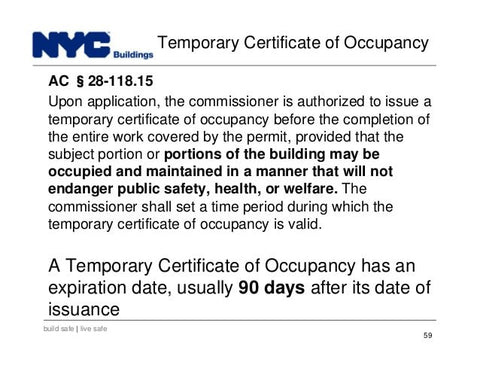
The primary purpose of TCO signs is to inform occupants, visitors, and emergency personnel that the building has temporary approval for occupancy. These signs typically indicate the TCO number, the date of issuance, and any associated restrictions or conditions. By displaying this information clearly and visibly, TCO signs ensure that individuals are informed about the building's status and understand that it may still need to be fully compliant with all safety regulations.
TCO signs ensure safety during the interim period before issuing the final Certificate of Occupancy (CO). They provide a visual reminder that the building is still undergoing final inspections and that specific safety measures may still be under construction or incomplete. This awareness is essential to prevent occupants and visitors from assuming all safety measures are fully functional and avoid complacency towards potential hazards.
Furthermore, TCO signs contribute to regulatory compliance of construction projects in New York City. Building owners and contractors must adhere to the regulations set forth by the DOB, which includes displaying TCO signs during the interim occupancy period. Failure to comply with this requirement can result in penalties and may even delay obtaining the final Certificate of Occupancy.
In addition to safety and compliance, TCO signs are a communication tool for the building's stakeholders. They show progress to interested parties such as investors, potential buyers, and tenants. These signs demonstrate that the construction is nearing completion and has undergone necessary inspections and approvals. This transparency can foster confidence in the project and help attract potential occupants or investors.
It is important to note that TCO signs are temporary and should be removed once the final Certificate of Occupancy is issued. This ensures clarity regarding the building's occupancy status and compliance with safety regulations.
In conclusion, TCO signs are crucial for new buildings in New York City during the interim occupancy period. They are vital in ensuring safety, regulatory compliance, and stakeholder communication. By prominently displaying TCO signs, building owners, contractors, and developers demonstrate their commitment to safety, transparency, and adherence to the regulations set forth by the DOB. As the city continues to grow and evolve, it is essential to prioritize using TCO signs to ensure the well-being of all who live and work in these new buildings and to maintain the high safety standards that New York City is known for.

